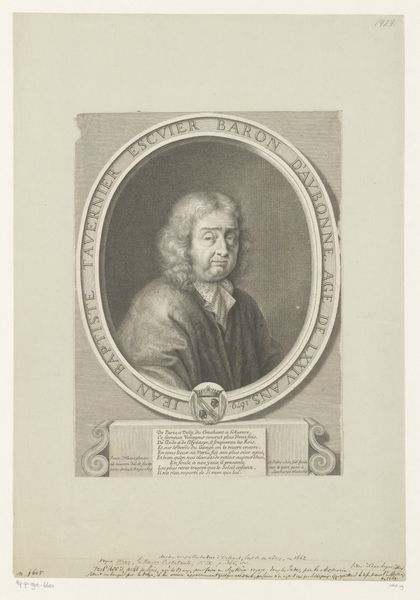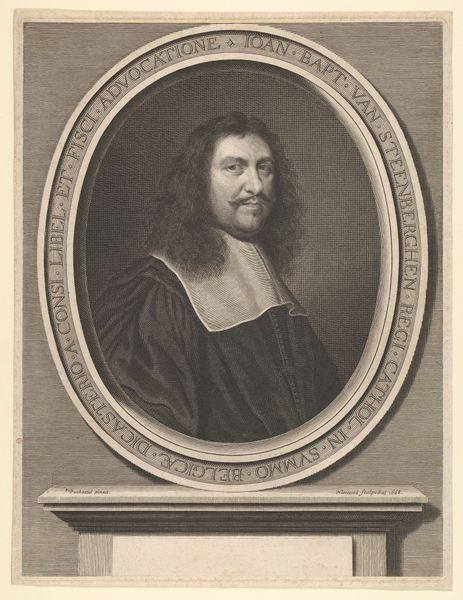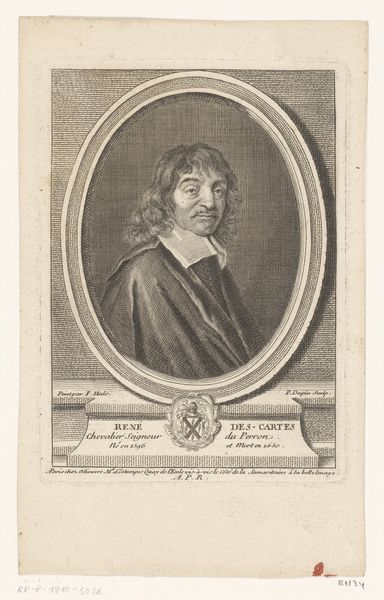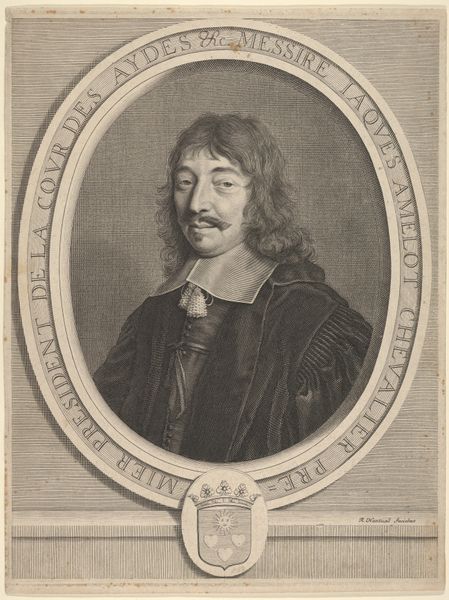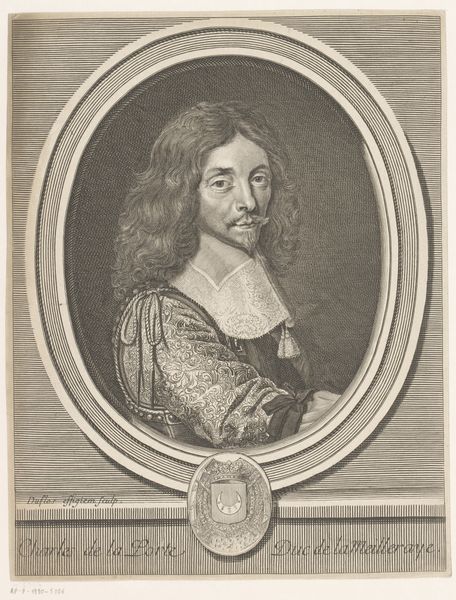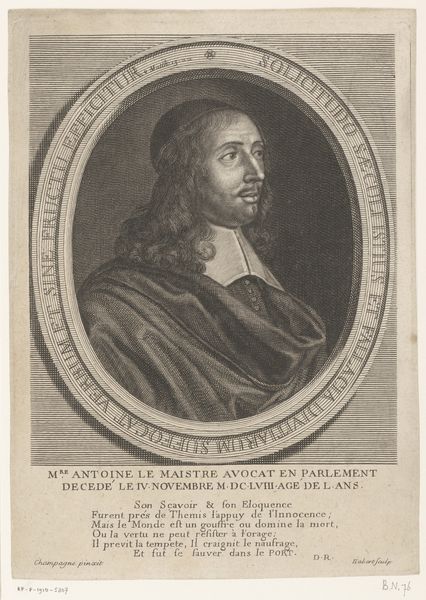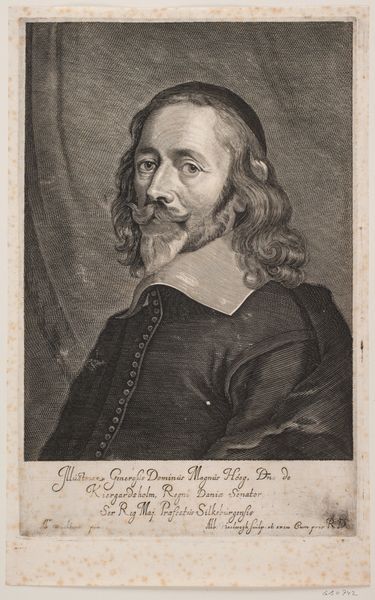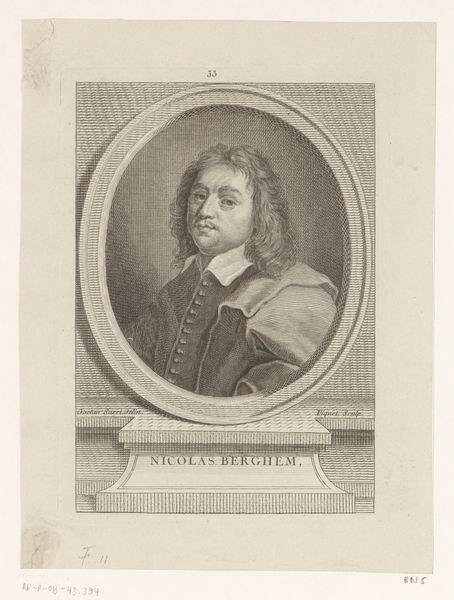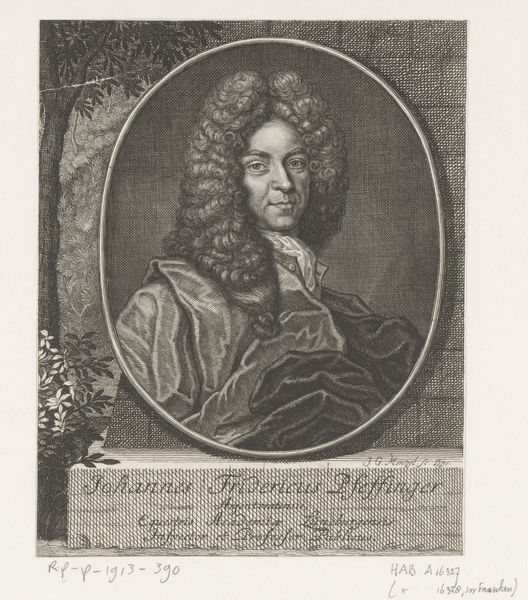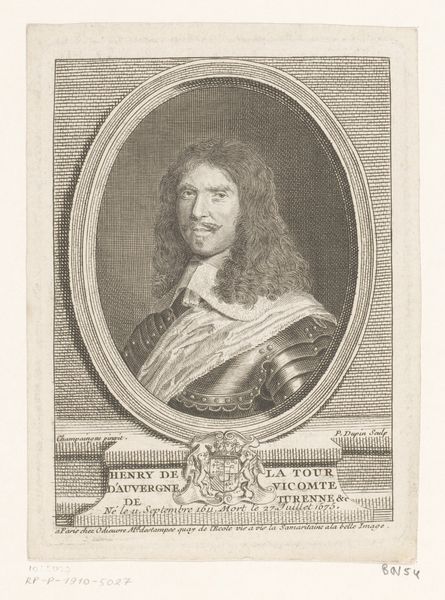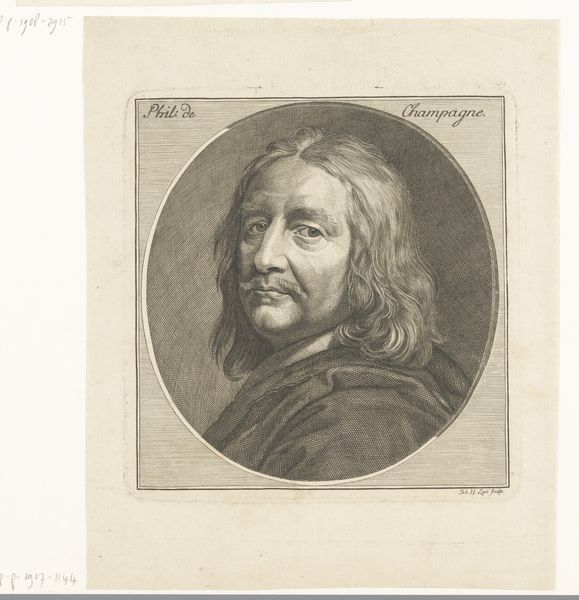
drawing, print, engraving
#
portrait
#
drawing
#
baroque
# print
#
old engraving style
#
portrait reference
#
pencil drawing
#
engraving
Dimensions: height 116 mm, width 98 mm
Copyright: Rijks Museum: Open Domain
Editor: This is "Portret van François Langlois," created sometime between 1636 and 1696 by Nicolas de Poilly the first, housed here at the Rijksmuseum. It's an engraving, giving it a delicate, almost ethereal quality. I’m curious, looking at this piece, how should we interpret the statement being made, especially regarding the subject's profession inscribed so prominently within the frame? Curator: It’s crucial to remember the burgeoning print market of the 17th century. This image is as much about François Langlois, the bookseller and print dealer, as it is about the accessibility of art. The inscription declares Langlois "of Chartres, bookseller and print merchant in Paris", indicating the increasing commercialization and public distribution of art. Think of how this contrasts with earlier, more exclusive forms of patronage. Editor: So, it's advertising, in a way? Promoting both Langlois and the medium of print itself? Curator: Precisely! It's also demonstrating how the proliferation of printed images, often portraits like these, shaped individual and collective identities. Who got to be represented, how, and for what audience? Were engravings democratizing, or creating new hierarchies of representation? Editor: I see, the portrait becomes less about the individual and more about the socio-economic system. What about its dissemination as a print itself? Was this artwork a single, isolated creation? Curator: Probably not. It speaks to a broader industry that facilitated exchange of images across geographical boundaries, popularizing certain styles and subjects. Considering how the image was created and distributed helps us understand the socio-political impact. Editor: I’m now seeing how a seemingly straightforward portrait reveals complex historical forces at play, making it very meaningful. Curator: Indeed. By viewing art through a historical lens, we uncover its public role. It also helps to understand that the distribution and interpretation of this artwork reflect not just individual artistic intent, but larger power structures shaping society.
Comments
No comments
Be the first to comment and join the conversation on the ultimate creative platform.
